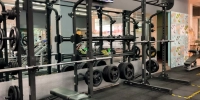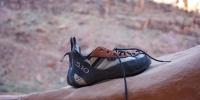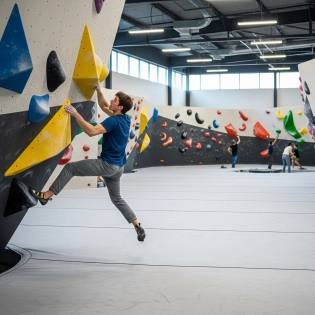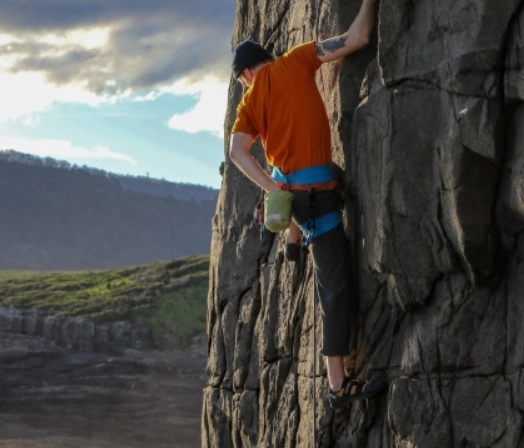







Climbers Point
Rock climbing is possible in sneakers, and even barefoot for that matter, but it is highly recommended to climb in climbing shoes as they will provide a better base for standing on small climbing holds, and give you better stability and grip on the wall.
Sneaker tend to have very soft rubber for their sole, and a generally inefficient shape and size when it comes to climbing. Due to this, trying to stand on small foot holds may be impossible since sneakers have such a large and soft sole, your feet would just slide right off of them.
Climbing shoes on the other hand have much harder rubber, the shoes are much tighter, and they are much less bulky. They are very thin in comparison to sneakers. All of these attributes, plus their shape, give climbers the best performance possible when it comes to feet work.
In climbing shoes, you can actually feel what you are standing on, this allows you to trust your feet much more than sneakers, which is something that for many is very difficult, but crucial.
While a chalk bag is not a requirement for bouldering or climbing in general, it is highly recommended to use chalk as it can be the difference between sending a route and falling. Chalk, when used, is preferably kept in a chalk bag or a chalk bucket, which is similar to a chalk bag, just larger and usually with more pockets for brushes and other items.
Chalk can be essential for those who sweat from their palms, or that climb with others who sweat, since they may be causing the climbing holds to be more slippery for you as well as for them.
Many people also don't think that they sweat from their palms and that they do not need chalk, but, most don't realize that they sweat even slightly, and that small amount of sweat could be what causes you to slip from a hold and not send the route.
Indoor rock climbing is just called indoor rock climbing. Though, the term could refer to a few different styles of climbing.
Indoor climbing could refer to bouldering, sport climbing, top rope climbing, auto-belay climbing, and speed climbing. Each of these may have similar traits to each other, but they are each different in their own way.
The most common and popular forms of indoor climbing are bouldering and sport climbing. So it is most likely that when referring to indoor rock climbing, it is actually a reference to either indoor bouldering or indoor sport climbing.
Tall and short people both have the potential to become amazing climbers. Climbing does not depend on the climbers height.
There are times when being short can be beneficial, such is in very compressed movements and positions, and there are times when being tall and having a long arm span can be very useful, such as reaching farther holds easier.
The main thing to keep in mind is your technique, and how you take advantage of your height, be it shorter or taller.
Sport cloths, nothing special really. Depending on the gym you will be climbing at, you may have to wear climbing shoes, which are usually provided at the gym as rentals. Chalk bags are also usually provided or can be rented for that session.
Other than that, something comfortable would be best. If it will be your first time, or you are a beginner, long pants may be wise to help prevent leg scratches if you slip or hit a climbing holds. They can easily scratch the skin without you even noticing.
You can walk in climbing shoes, it is just not recommended. Climbing shoes are not meant for walking, they are meant for climbing. Walking in them can just wear the shoes out quicker. Not to mention that they are also pretty painful to just walk in.
A lot of climbers like to walk in new climbing shoes to help stretch them out and break them in, so that could be an exception to the above. After those shoes have stretched, though, it would just be wearing them out quicker.




